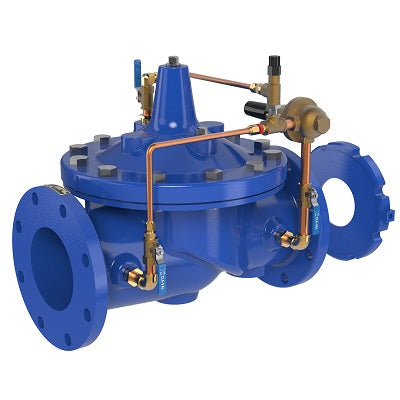The Function of Control Valves in Fluid Circulation Management Equipment
The Function of Control Valves in Fluid Circulation Management Equipment
Blog Article

Maximize Power Savings and Comfort With Advanced Building Automation Controls
In the world of contemporary style and center monitoring, the assimilation of sophisticated building automation regulates stands as an essential innovation. By utilizing the power of automation, buildings can adapt, respond, and develop in means that were once inconceivable.
Energy Effectiveness Perks
Power efficiency advantages can dramatically reduce power usage and functional prices in structures. Energy-efficient systems, such as innovative structure automation controls, can maximize the use of resources like air conditioning, lighting, and heating, leading to reduced energy expenses over time.
Moreover, enhanced power efficiency can prolong the life expectancy of structure tools and systems. By operating more effectively, a/c systems, lighting fixture, and other structure components experience much less deterioration, causing reduced maintenance and substitute costs. In addition, energy-efficient buildings often regulate greater residential or commercial property worths and rental prices, supplying lasting economic benefits to owners.
Additionally, energy effectiveness can enhance occupant comfort and performance. Appropriately regulated indoor atmospheres with ideal lights and thermal problems create a more positive and conducive office, causing enhanced employee fulfillment and performance. In general, the power performance benefits related to advanced building automation controls are diverse, incorporating price savings, ecological stewardship, and occupant wellness.
Boosted Comfort Control
Enhancing comfort control in structure environments needs an advanced integration of sophisticated automation systems for optimum owner wellness. By making use of advanced building automation controls, centers can customize the indoor environment to fulfill the details demands and choices of residents. control valves.
Enhanced comfort control surpasses basic temperature level modifications. It includes functions such as tailored setups, occupancy sensing units, and natural light use to develop a receptive and dynamic setting. By including these innovative controls, structures can not only improve convenience however additionally boost energy performance by maximizing system operations based upon actual tenancy and use patterns. Inevitably, prioritizing passenger convenience through sophisticated automation systems causes an extra satisfying and much healthier indoor atmosphere.
Functional Performance Improvements

Additionally, the execution of real-time monitoring and analytics tools allows structure drivers to recognize power inadequacies and operational abnormalities immediately. By constantly monitoring power use patterns and system performance metrics, modifications can be made in real-time to maximize energy usage and guarantee peak operational efficiency. control valves. Additionally, incorporating demand reaction approaches into building automation controls can even more improve functional efficiency by dynamically changing energy use based on grid conditions and pricing signals
Indoor Climate Optimization
Effective indoor climate optimization is a fundamental aspect of structure automation controls, making certain residents' convenience and health while making the most of power savings. By utilizing sophisticated sensors and controls, constructing automation systems can continuously adjust and keep an eye on temperature, humidity degrees, air top quality, and air flow to create an optimal interior atmosphere. Maintaining comfortable and regular conditions not just enhances owner satisfaction however also boosts performance and total health.
Interior environment optimization additionally plays a critical duty in power efficiency. By pop over to these guys fine-tuning heating, air flow, and cooling systems based on real-time data and tenancy patterns, building automation controls can considerably minimize energy usage - control valves. Carrying out strategies such as demand-controlled air flow and thermal zoning can assist reduce power waste while ensuring that each location of the structure gets the essential conditioning.

Lasting Environment Creation
Building automation manages not only optimize indoor environment problems for power efficiency and occupant comfort but likewise lay the foundation for creating a lasting atmosphere with tactical administration of systems and sources. By integrating innovative building automation technologies, such as sensing units, actuators, and smart software application, facilities can monitor and readjust energy usage in real-time to reduce waste and minimize their carbon impact. These systems allow anticipating maintenance, recognizing potential problems before they intensify and maximizing equipment efficiency to improve long life and effectiveness.
Moreover, sustainable atmosphere creation extends past power management to encompass water preservation, waste decrease, and indoor air high quality improvement. Building automation controls can control water use, detect leaks, and guarantee appropriate waste disposal methods, adding to total sustainability initiatives. In addition, by checking and regulating air flow and filtration systems, these technologies enhance passenger wellness and productivity while reducing energy usage connected with heating and cooling operations.
Final Thought
Finally, progressed building automation manages offer substantial benefits in regards to power savings, comfort control, functional performance, interior climate optimization, and producing a lasting environment. By applying these controls, buildings can achieve optimal efficiency while minimizing power usage and enhancing owner convenience. It appears that using advanced automation innovation is critical in boosting building efficiency and producing a much more lasting future.
Energy effectiveness benefits can significantly decrease energy consumption and operational costs in structures. On the whole, the power efficiency advantages associated with innovative structure automation controls are multifaceted, including price savings, environmental stewardship, and owner wellness.
In addition, integrating need action methods into structure automation controls can additionally boost operational efficiency by dynamically readjusting power use based on grid problems and rates signals.
Building automation manages not just enhance anonymous interior environment conditions for power efficiency and occupant convenience but additionally lay the structure for creating a sustainable atmosphere through tactical monitoring of sources and systems.In conclusion, advanced building automation regulates deal significant advantages in terms of energy cost savings, comfort control, operational efficiency, indoor environment optimization, and producing a lasting environment.
Report this page